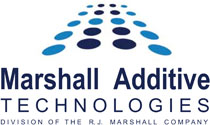By: Jim & Ann Innes
In our last post we went over what Flame Retardants (FR) are. Now let’s look at a brief overview of halogen flame retardants.
These FR types are currently the largest value in the FR marketplace. They are classic, there are many different products, they are widely used, and they have been around the longest. Halogen flame retardants are almost always organic products containing halogen. For those who do not know, halogen refers to the column on the periodic table of elements called halogens – which begins at the top with “F” for Fluorine and ends at the bottom of that column with “I” for Iodine (and on modern tables “At” for Astatine). For a discussion of halogenated flame retardant additives for plastics, really only bromine, chlorine, and fluorine are of interest. These elements are included in many flame retardant products. The largest halogen product today by far is PVC, polyvinyl chloride – something most people have heard of but probably do not think of or know as a flame retardant. PVC is widely used, is inherently flame retardant, and is found in automotive interiors, plastic pipe, wiring in our homes and businesses, packaging, and a host of other common products. The largest volume bromine containing flame retardant is a compound called Tetrabromobisphenol A (TBBA), which is widely used in epoxy circuit boards in all the electronic equipment we use in our daily lives. Following TBBA is a long list of other bromine containing flame retardants which are used in a variety of rigid thermoplastic products such as those components and parts found in our coffee makers, our light switches, our washing machines and many other common products. When such halogen flame retardant additives are used, they are frequently accompanied by a synergist material such as antimony oxide. A synergist in this case is a co-additive which boosts the flame retardant effectiveness. Today the cost of this particular synergist coupled with toxicological pressures and OEM demands have spurred an intense search for substitutes and replacements. Since formulating for effective flammability performance is a very complex problem, the best approach is usually to contact the experts. Achieving maximum flammability protection in the most cost effective manner is NEVER a matter of simple replacement in any FR formulation. Rather, careful thought and planning are always required usually along with just the right formulation adjustments. Give us a call. We are here to help.
